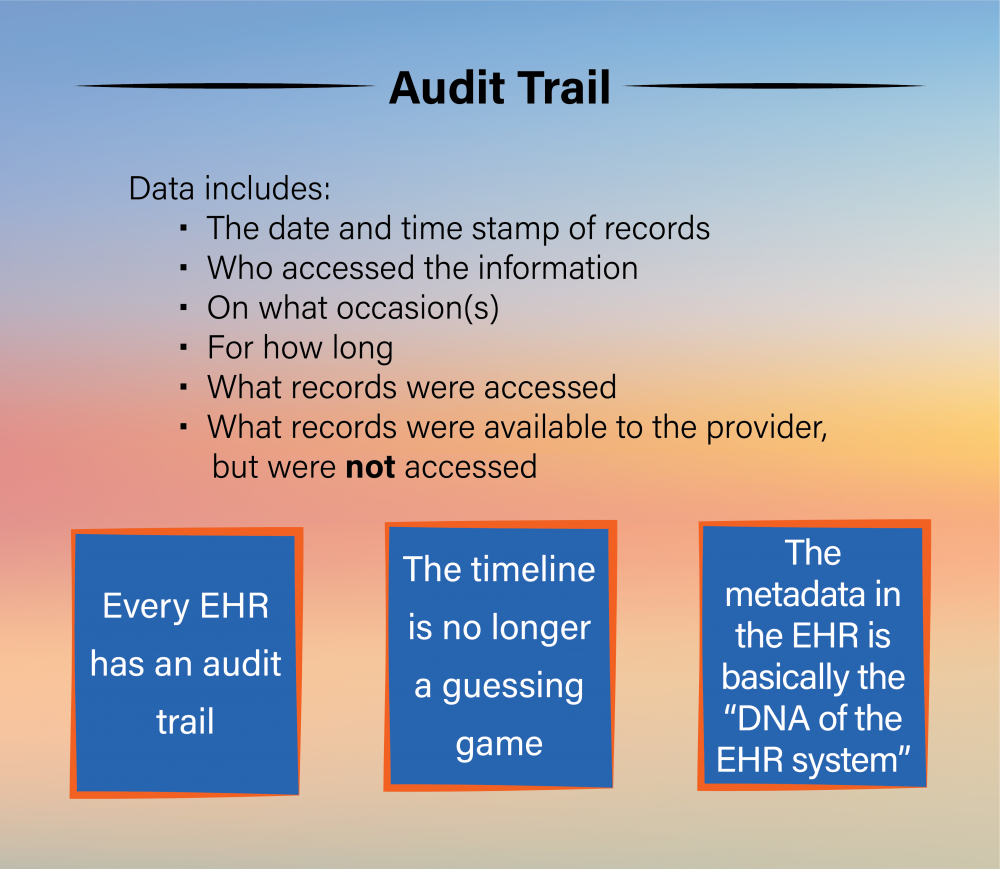July, 2021
Every EHR system has an audit trail. The timeline is no longer a guessing game. Gone are the days of using handwriting experts to try to determine when and by whom an entry was made in a patient’s chart. Forensic IT experts can now review the metadata contained within the EHR to determine everything that occurred in the electronic chart, outlined in the graphic below.

Because every keystroke in an EHR is recorded with a time and date stamp, amendments, supplementation, corrections, and addendums should not be made after an adverse event or the assertion of a claim or filing of lawsuit. Doing so will likely be viewed suspiciously and as self-serving. If a correction to the EHR is needed for continuity of care purposes, and there is no claim or lawsuit pending or threatened, these corrections should be made in the same manner as with paper charts:
If a claim or lawsuit is pending/threatened, or possible, contact an SVMIC Claims Attorney or your defense attorney to discuss whether correcting the record is advisable at that time.
Additionally, EHR documentation should be performed contemporaneous with the event or as close thereto as possible. The audit trail will reveal the time differential between the event taking place and the recording of the event. If a significant amount of time is allowed to elapse, the accuracy of the provider’s documentation may be called into question.
Finally, keep in mind that if a provider shares his or her login information with a staff member or permits someone else to sign an EHR electronically using e-signature, it will appear from the audit trail that it was the provider who accessed the EHR or signed the record. This could be problematic in a claim where the record is in question, and it could also be a violation of third-party payer contracts.
Jeffrey A. Woods is the Director of Risk Education in the Risk Education and Evaluation Services Department at SVMIC. Jeff received his Bachelor of Science degree from the University of Tennessee Martin and his Juris Doctorate degree from the University of Tennessee Knoxville. Following graduation, he practiced law in Knoxville for almost 15 years, advising physicians and healthcare providers and defending them in malpractice claims. He is licensed to practice in Tennessee and all Federal courts, including the United States Supreme Court. He is a member of the Tennessee Bar Association.
Jeff joined SVMIC in 2003 and was a Senior Claims Attorney until 2015 when he transferred to his current position.
Our team is here to answer any questions you might have or to help you fill out a quote application.